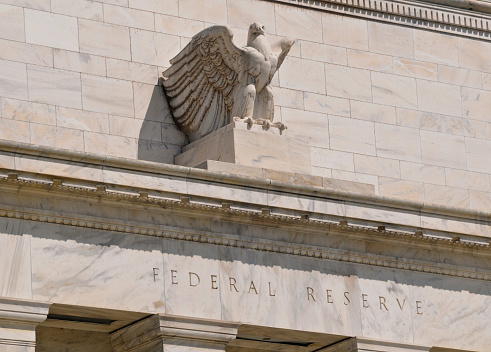
We have revised our forecast for the FOMC, with 0.25% rate cuts in March; April; and June.
Readers will be aware that Westpac has forecast three cuts in the federal funds rate in 2020 since the middle of 2019.
That was based on a likely slowdown in the US economy to below trend (to 1.5%) in 2020 particularly as consumer spending slowed from a 3% pace in 2019 to near 2% in 2020.
The cuts would also be justified on the basis that the FOMC had been unsuccessful in lifting inflation (as measured by core PCE) to 2% let alone holding core PCE above 2% for a period to emphasise that the inflation target is a symmetric target around 2% rather than a spot target of 2%.
However in recent weeks the spread of COVID-19 has threatened the economic outlook for the US economy.
In the first instance that threat came in the form of a sharp tightening in financial conditions as equity prices tumbled by more than 10%; credit spreads spiked; and primary credit markets effectively closed.
The FOMC responded to that tightening in conditions by lowering the federal funds rate by 50 basis points between scheduled FOMC meetings. In announcing the decision the Chairman of the FOMC Jay Powell, referred to “ evolving risks associated with the Coronavirus”.
That decision achieved two of the three rate cuts we had expected in 2020.
While we anticipated a slowing consumer we did not envisage COVID-19 as one of the threats.
The virus can be seen as an additional source of household weakness over and above our core view.
We expect that the virus will weigh on the US economy for some time yet.
Our reports indicate that “only” around 500 tests had been completed by March 2. As the testing process ramps up and announced cases start to lift the virus is expected to weigh heavily on activity in the US, particularly the consumer.
Our forecasts envisages a significant lift in announced cases in the US over a number of months with the “peak” coinciding with the end of the June quarter as warmer weather; appropriate responses amongst individuals around isolation; appropriate health practices; and, potentially, anti-viral drugs are successfully introduced.
We are already seeing signs of government; corporate; and individual responses to the virus’ factor – supply disruptions; the cancellation of travel plans and major events such as sporting fixtures and conferences; greater use of capacity to work from home; as well as early signs of slowing growth in discretionary spending.
Businesses are also likely to respond to these developments by suspending hiring and, possibly, reducing employment costs.
These trends are expected to gather momentum into the June quarter and become more apparent to the FOMC through confidence measures; other high frequency data and jobs reports.
The consumer is expected to be particularly vulnerable to these developments.
Under this scenario we expect a stalling of consumer spending in the June quarter.
Along with declining business investment and a COVID-19 shock to net exports, this outcome could see GDP contract in the June quarter.
The FOMC is expected to have decent insight into these events at its March; April and June meetings. A desire to maintain momentum in the US economy is likely to trigger cuts of 25bps at each of these meetings. From the June meeting the negative COVID-19 effects are expected to ease providing the FOMC some comfort that it has achieved its purpose.
However, with inflation still lagging below the “symmetrical“ target we see no case over the course of the remainder of 2020 or in 2021 for the FOMC to initiate a new tightening cycle.
Our growth profile for the US economy over 2020 is for growth to slow to 1.0%yr from 2.3%yr in 2019 with the quarterly (annualised) growth profile for 2020 being 1.3% (Q1); -0.2% (Q2); 1.1% (Q3) and 1.8% (Q4).
Of course this growth profile which is significantly below trend is likely to see a marked slowdown in jobs growth.


 Signal2forex.com - Best Forex robots and signals
Signal2forex.com - Best Forex robots and signals




